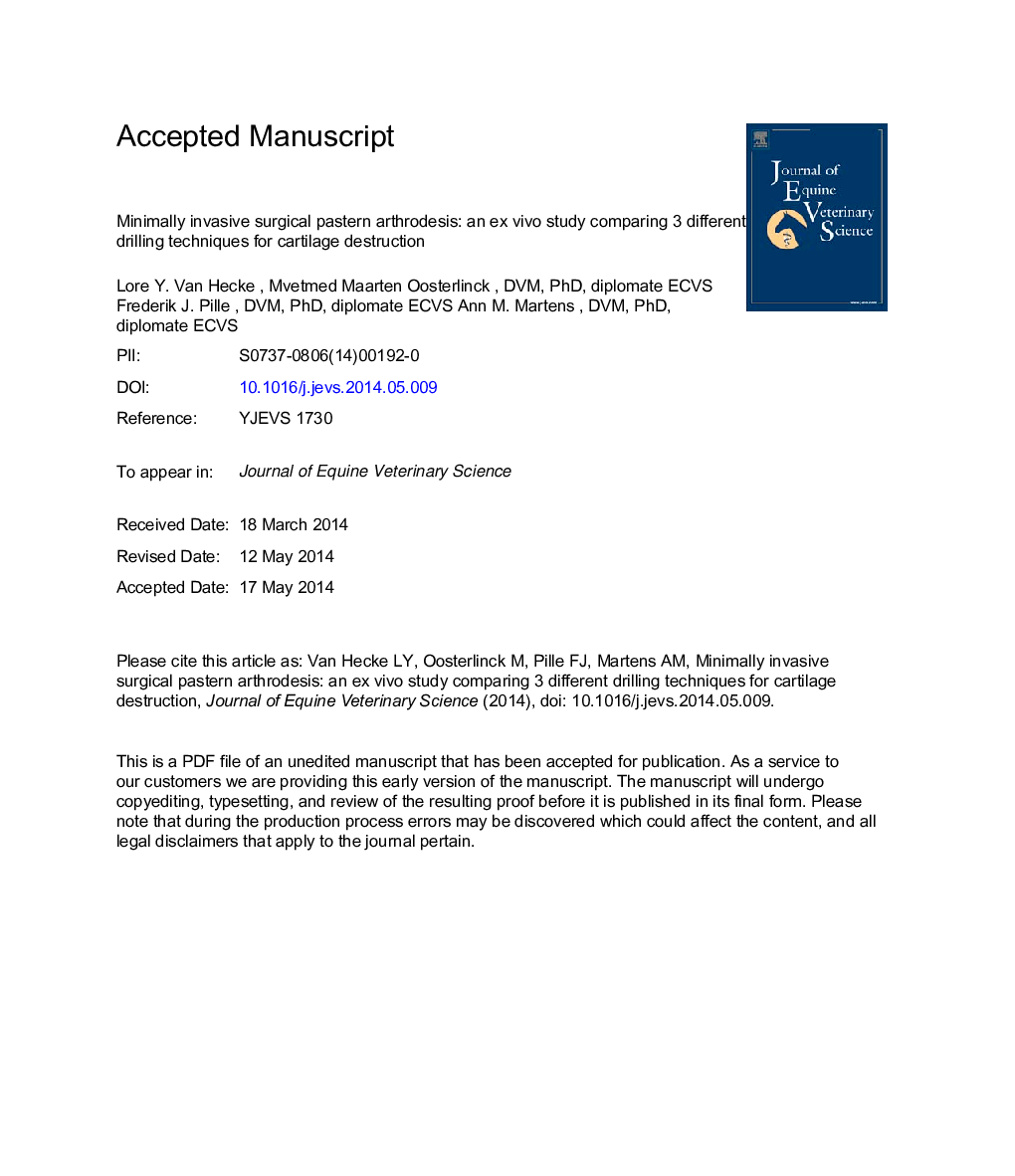| Article ID | Journal | Published Year | Pages | File Type |
|---|---|---|---|---|
| 10961380 | Journal of Equine Veterinary Science | 2014 | 17 Pages |
Abstract
The objective was to compare the degree of cartilage destruction obtained with three different drilling techniques for minimally invasive arthrodesis of the equine pastern joint. Three drilling techniques were randomly tested on 36 cadaver distal limbs (six front and six hind limbs in each group). The basic drilling pattern consisted of several passes in a dorsopalmar and/or plantar direction across the joint space (group 1) and was either supplemented with one additional pass in a lateromedial and/or mediolateral direction (group 2) or two additional passes in a distodorsal-proximopalmar and/or plantar direction (group 3). After drilling, the pastern joints were disarticulated, the articular surfaces of P1 and P2 were digitally photographed, and the area of removed cartilage was measured using planimetry. The mean percentage of cartilage removed in the entire pastern joint was significantly lower in group 1 (34.1 ± 4.0%) compared with groups 2 and 3 (45.0 ± 5.2% and 43.0 ± 4.0%, respectively; P < .001). There was significantly more cartilage removed in the hind (47.1 ± 4.4%) versus the forelimbs (42.0 ± 5.0%) of group 2 (P = .003), whereas in group 3, there was significantly more cartilage removed in the forelimbs (44.6 ± 3.0%) compared with the hind limbs (40.6 ± 3.0%) (P = .039). The technique of group 2 gave significantly more cartilage destruction compared with technique 1 while being practical to perform. Therefore, this technique seems to be the most promising for further evaluation in a clinical situation.
Related Topics
Life Sciences
Agricultural and Biological Sciences
Animal Science and Zoology
Authors
Lore L. MVetMed, Maarten DVM, PhD, Diplomate ECVS, Frederik J. DVM, PhD, Diplomate ECVS, Ann M. DVM, PhD, Diplomate ECVS,
